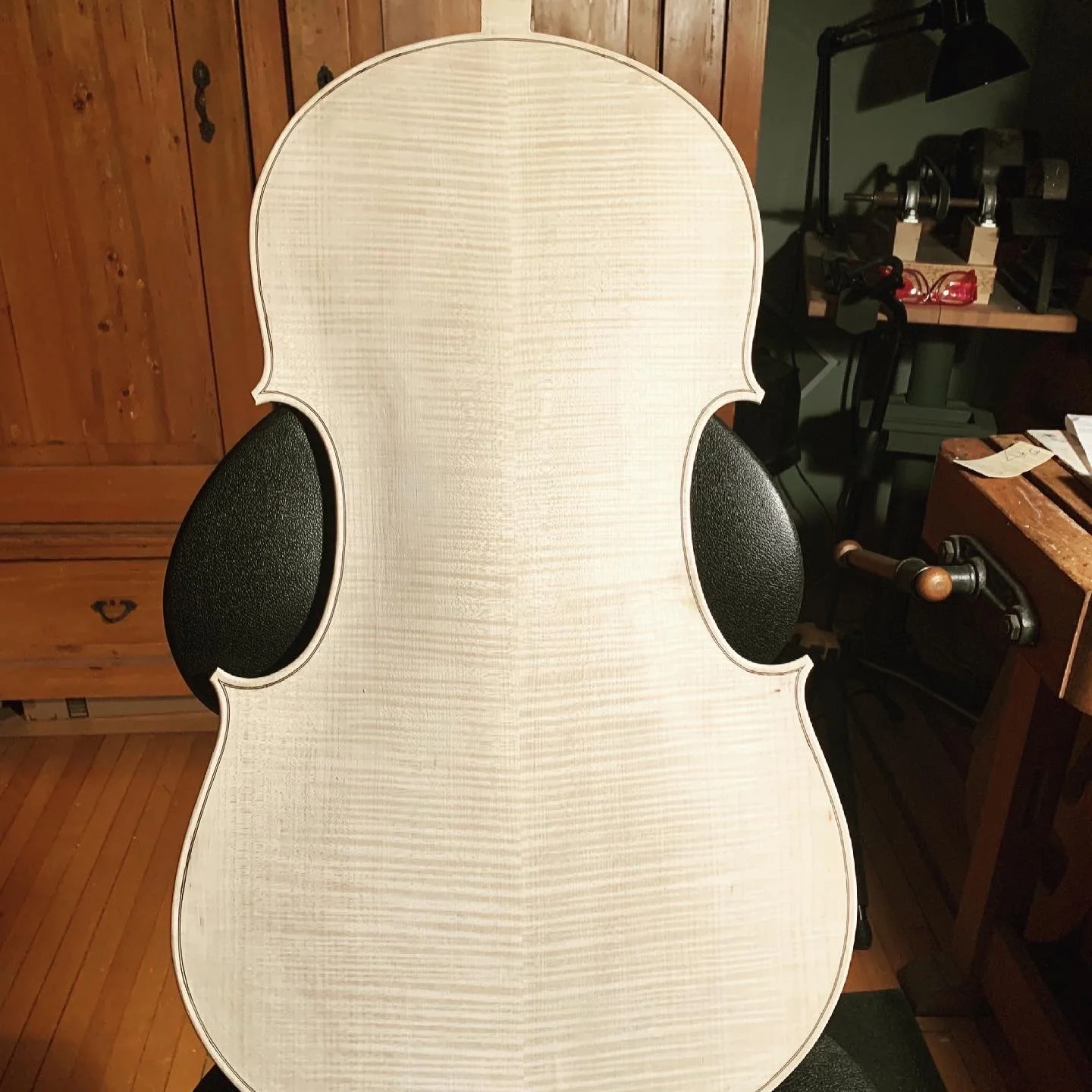Top and Back are not Opposites
Below are some pictures of the cello nearing completion “in the white,” which means the body of the cello will soon be closed and the neck affixed to it. The cello will need varnish before the fingerboard, bridge and other fittings are added and this process takes a few months to complete.
I was very struck by the beauty and finish of these pieces. While an instrument with varnish is amazing, there is something very appealing about seeing the raw wood having been sculpted like this. I think it almost seems more real. I’m captivated by the top and the back of the cello for different reasons. The top because of the proportions. I don’t know if I can explain exactly why these particular proportions are appealing, but as it is with any piece of art, it’s hard to truly explain why we gravitate towards it. Perhaps it’s because I know this instrument is going to be mine, or perhaps there is something in the curve of the c-bouts or the ratio between shoulders and hips. Probably it’s a combination of those things. It’s interesting to note that Guadagnini does not seem to have had contact with any of the great master makers of his time and so his instruments are somewhat original in their style even though the workshops of Stradivari, Guarneri and other greats were nearby. It may just be my imagination, but I can see that original figure in the top. Of course this is not a Guadagnini even if it is inspired by one. This is made by Michele and It’s hard to miss her elegant style.
The back is appealing for the same reasons, but I also enjoy looking at the flame and the grain of this maple and imagining how the stage lights will hit it, or the sun through the skylight in my studio. I have always been very attracted to the aesthetic of a beautiful instrument. In another, wealthier, more eccentric life, I could see myself compulsively collecting beautiful instruments just to look at. Of course, most of the beauty is in the sound and that is still an exciting mystery.


